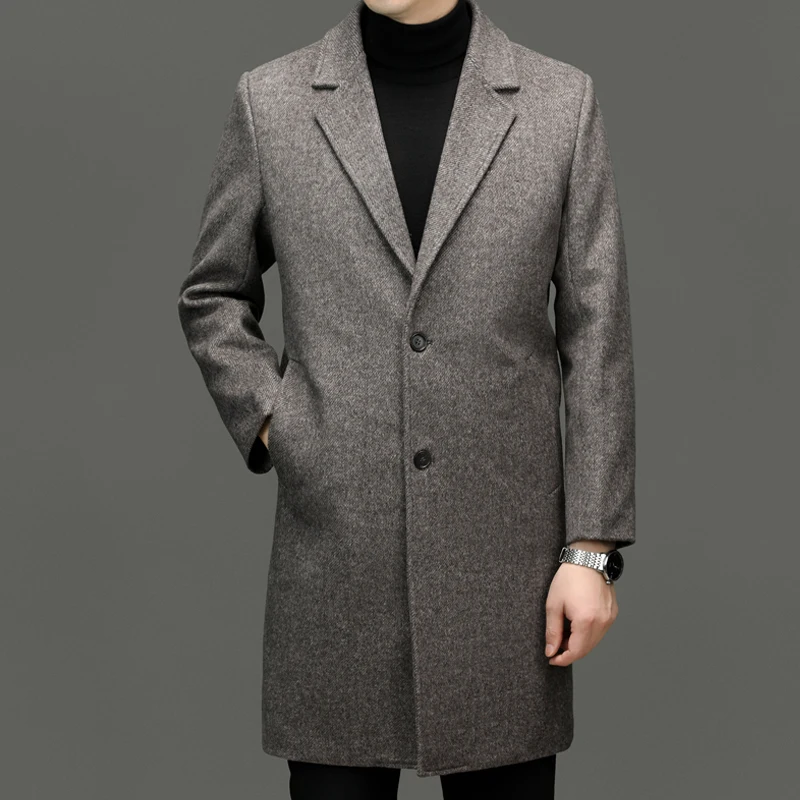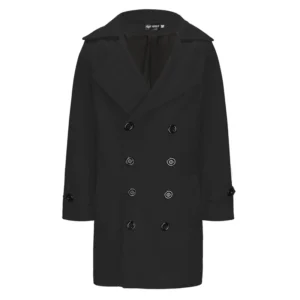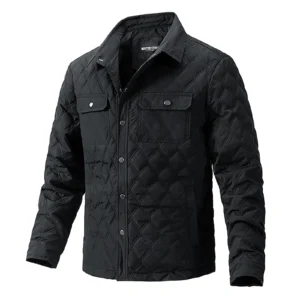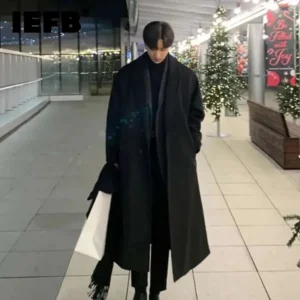Introduction: The Transformative Power of the Right Coat Length
The right coat length does more than just keep you warm—it completely transforms your silhouette and makes a powerful style statement. While many men focus on color, material, or brand when shopping for outerwear, the length of your coat can make the difference between looking polished and proportionate or awkward and ill-fitted.
Instead of blindly following fashion trends, understanding which coat length works best for your unique body type is essential for creating a flattering appearance. This comprehensive guide will help you identify your body shape and discover the most complementary coat lengths for your frame. You’ll learn practical advice for selecting outerwear that enhances your natural proportions, creates visual balance, and boosts your confidence.
At Metro Cloak, we believe that finding the perfect coat isn’t just about style—it’s about how that coat makes you feel when you wear it. The right coat length can transform not just your appearance but your entire presence. Understanding the fundamentals of choosing right coat length will ensure you make smarter purchasing decisions that serve you well for years to come.
Understanding Men’s Body Types: The Foundation of Great Outerwear Choices
Before diving into specific coat length recommendations, it’s important to identify your body type. While most men are combinations of different types, understanding your predominant shape will guide you toward more flattering outerwear choices.
Here are the five common male body types:
Rectangle/Athletic: Your shoulders and hips are approximately the same width with minimal waist definition. This balanced frame offers versatility in many coat styles.
Triangle/Trapezoid: Your shoulders are broader than your hips, with a gradual taper toward a slimmer waist. This athletic V-shape is well-suited to many structured coat styles.
Inverted Triangle: You have wide shoulders and chest with notably narrower waist and hips. Your proportions benefit from specific coat lengths that balance your upper body.
Oval/Round: You have a fuller midsection with proportionally narrower shoulders and hips. The right coat length can create flattering vertical lines.
Compact/Short: Regardless of your weight distribution, you have a shorter stature (typically under 5‘8”). Proportion becomes especially important in your coat selection.
To determine your body type, examine your overall proportions in a mirror or measure your shoulders, chest, waist, and hips. Notice where you carry most of your weight and the general silhouette of your frame.
Remember that these classifications are guides rather than rigid rules. Many men have characteristics of multiple body types, and your unique proportions should ultimately guide your choices in the men’s coat length guide.
Essential Coat Length Terminology & Visual Effects
Before exploring specific recommendations for each body type, let’s establish the standard terminology used to describe coat lengths and understand the visual effect each creates:
Cropped/Waist-length: Ends at or above the waist. This style visually lengthens the legs but can shorten the torso. Ideal for casual looks and creating a more youthful appearance.
Hip-length: Covers the upper part of the hips. This versatile length works well for many body types and casual settings. Examples include bomber jackets and traditional peacoats.
Mid-thigh: Falls between the hips and knees. This balanced middle-ground length offers both versatility and coverage. Car coats and many casual overcoats fall into this category.
Knee-length: Reaches the knees or just above. This classic overcoat length provides excellent coverage while maintaining proportion. Ideal for business and formal wear.
Below-knee/Midi: Covers the calves but stops above the ankles. This length adds drama and formality. Works well for taller frames and more formal settings.
Full-length/Maxi: Reaches the ankles. The most dramatic and formal option, maxi coats make a statement but require careful styling to avoid overwhelming the wearer.
Understanding these basic length classifications helps you communicate your preferences when shopping. The key principle to remember is proportion—your coat length should complement your height and body shape rather than working against it.
The differences between short vs long coats create dramatically different impressions. Shorter coats tend to be more casual and can make legs look longer, while longer coats add formality and gravitas. Various men’s overcoats demonstrate how length affects the overall impression of the garment.
The Rectangle/Athletic Body Type: Balancing Proportions with Coat Length
Characteristics: If you have a rectangle or athletic body type, your shoulders and hips are relatively even in width with minimal waist definition. Your frame is balanced but may lack natural curves.
Ideal Coat Lengths: Mid-thigh to knee-length coats typically flatter your body type best by maintaining your natural balance while adding some shape.
Specific Recommendations:
* Structured coats with slight waist definition to create shape where it might be lacking
* Single-breasted styles often look more flattering than double-breasted options, which can add bulk
* Belted coats can create a waist where there isn’t much natural definition
* Mid-length overcoats that maintain your proportional balance
Approaches With Caution: Very short cropped styles can make your torso look boxy, while extremely long coats without structure may overwhelm your frame and create a columnar effect.
Classic coat options that work exceptionally well for rectangular body types include navy peacoats and camel topcoats with slight waist suppression. These styles add structure while honoring your natural proportions. Many men’s wool overcoat styles are designed with this body type in mind, offering clean lines and subtle shaping.
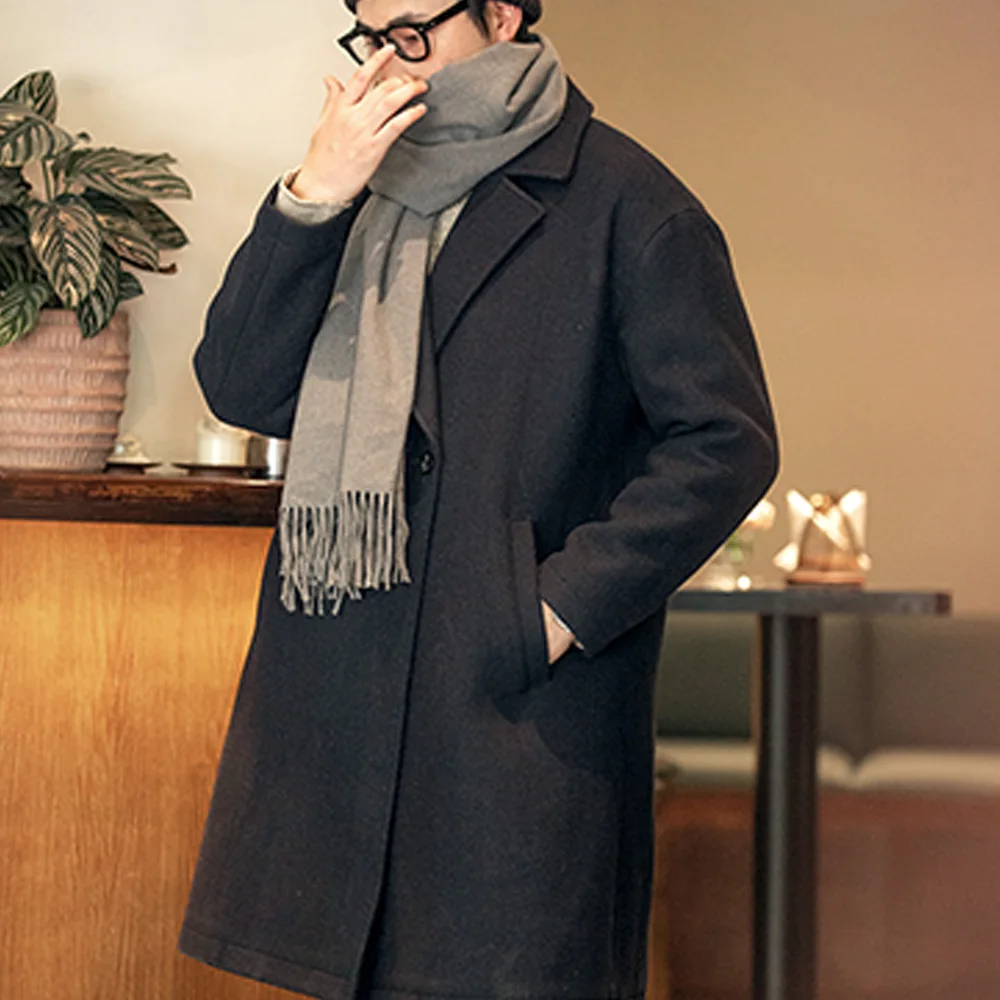
The Triangle/Trapezoid Body Type: Emphasizing Strong Shoulders
Characteristics: With the triangle or trapezoid body type, you have broader shoulders that taper to a narrower waist and hips, creating a natural V-shape.
Ideal Coat Lengths: Hip to knee-length options work best as they showcase your V-shaped torso and athletic build.
Specific Recommendations:
* Fitted styles that follow your natural V-shape rather than hiding it
* Coats with tapered waists that highlight your athletic build
* Mid-thigh lengths that maintain proportional balance while showing off your shape
* Structured shoulders that enhance your naturally broader upper body
Approaches With Caution: Boxy, unstructured cuts hide your athletic shape and can make you look shapeless. Avoid overly loose styles that don’t honor your natural tapering.
Ideal coat styles for triangle body types include tailored wool topcoats and military-inspired coats with structured shoulders. These designs complement your broader shoulders while maintaining a clean silhouette through the torso. The men’s car coats collection offers several options that work particularly well for this body type, with their structured shoulders and mid-length proportions.
The Inverted Triangle Body Type: Balancing Broader Upper Body
Characteristics: With an inverted triangle shape, you have a wide chest and shoulders with notably narrower hips, creating a top-heavy appearance.
Ideal Coat Lengths: Knee-length or longer options help balance your proportions by adding visual weight to your lower body.
Specific Recommendations:
* A-line or slightly flared styles that balance broader shoulders by adding visual weight below
* Raglan sleeves that de-emphasize shoulder width (unlike set-in sleeves that can make shoulders appear even broader)
* Simpler shoulder details without excessive structure or padding
* Longer lengths that create visual balance throughout your silhouette
Approaches With Caution: Very short coats can emphasize your top-heavy silhouette and create an unbalanced appearance.
Classic A-line overcoats and relaxed-fit car coats without structured shoulders work well for inverted triangle body types. These styles help balance your proportions rather than emphasizing your already-broad shoulders. For optimal balance, explore men’s long overcoat options that extend below the knee, creating a more harmonious overall silhouette.
The Oval/Round Body Type: Creating a Streamlined Silhouette
Characteristics: If you have an oval or round body type, you carry more weight through your midsection with proportionally narrower shoulders and hips.
Ideal Coat Lengths: Mid-thigh to knee-length coats work best by creating clean vertical lines that elongate your frame.
Specific Recommendations:
* Single-breasted styles that create a clean vertical line without adding bulk
* Dark, solid colors for a slimming effect that complements the length
* Straight cuts that don’t cling to the midsection but also avoid excess fabric
* Structured shoulders that add definition to your upper body
Approaches With Caution: Very short coats can emphasize the midsection, while double-breasted styles add visual bulk. Also avoid belted options that cinch at your widest point.
Charcoal single-breasted topcoats and straight-cut navy overcoats offer flattering options for oval body types. These classic styles provide structure without drawing attention to the midsection. Understanding the definitive guide full coat length principles will help you select options that create a streamlined appearance.
The Compact/Short Body Type: Optimizing Proportions
Characteristics: If you have a compact or short body type, you’re of shorter stature (typically under 5‘8”) regardless of your weight distribution.
Ideal Coat Lengths: Hip to mid-thigh lengths work best by maintaining balanced proportions without overwhelming your frame.
Specific Recommendations:
* Shorter coat lengths that don’t overwhelm your height
* Well-fitted shoulders and sleeves without excessive padding or bulk
* Clean vertical lines created by single-breasted styles
* Proper sleeve length that hits exactly at your wrist (not shorter or longer)
Approaches With Caution: Maxi-length coats can overwhelm your frame and make you appear shorter. Also avoid oversized styles, heavy details, or anything that creates horizontal lines that cut your height visually.
Classic car coats with proper sleeve length and fitted hip-length jackets offer excellent options for compact body types. These styles provide warmth and style without sacrificing proportion. The best coat length for short men focuses on maintaining these balanced proportions.

Our collection of men’s pea coats includes several options specifically designed with shorter men in mind, featuring proportional lengths that flatter without overwhelming.
Beyond Body Type: Special Considerations for Finding Your Perfect Coat Length
While body type provides the foundation for coat length selection, several other factors influence what will look best on you:
Height Considerations: Extremely tall men (over 6‘2”) can typically wear longer coats that might overwhelm average heights. Similarly, very tall and broad men need to balance length with their overall scale.
Personal Style Preference: Your personal aesthetic matters. A creative professional might prefer a longer, more dramatic coat than someone with conservative style, even with the same body type.
Seasonal Considerations: Winter coats often benefit from longer lengths for practical warmth, while transitional weather may call for shorter, lighter options.
Occasion Appropriateness: Business settings typically call for knee-length or longer overcoats, while casual contexts allow for more variety in length.
Always try on different lengths before purchasing when possible. What works in theory might feel different when you actually wear it. Understanding how your perfect coat length for height interacts with these other factors will help you make the most flattering choice.
Mens Double Breasted Pea Coat, Mens Wool Blend Coat, Mens Wool Pea Coat
Price range: $136.84 through $157.36 Select options This product has multiple variants. The options may be chosen on the product pageMens Cashmere Overcoat, Mens Hooded Winter Coat, Mens Wool Blend Coat
Price range: $128.72 through $139.68 Select options This product has multiple variants. The options may be chosen on the product pageMens Black Overcoat, Mens Black Wool Coat, Mens Wool Overcoat
$339.18 Select options This product has multiple variants. The options may be chosen on the product pageMens Double Breasted Pea Coat, Mens Hooded Winter Coat, Mens Quilted Coat
Price range: $81.00 through $108.48 Select options This product has multiple variants. The options may be chosen on the product pageMens Grey Overcoat, Mens Wool Blend Coat, Mens Wool Overcoat
$201.28 Select options This product has multiple variants. The options may be chosen on the product pageMens Herringbone Coat, Mens Long Overcoat, Mens Wool Overcoat
Price range: $197.16 through $203.69 Select options This product has multiple variants. The options may be chosen on the product page
Fabric and Construction: How Materials Affect Coat Length Selection
The material of your coat significantly influences how its length appears and drapes on your body:
Wool and Cashmere:
* Drape elegantly at longer lengths
* Provide structure and formality
* Work well for knee-length and below-knee options
* Create a refined silhouette even in longer styles
Technical/Synthetic Materials:
* Often work better in shorter to mid-length styles
* Create a more casual appearance regardless of length
* Typically lighter in weight, affecting how the coat moves
* May not drape as elegantly at longer lengths
Leather and Suede:
* Generally more flattering in shorter to mid-thigh lengths due to stiffness
* Create a distinct casual or edgy appearance
* Can appear heavy if too long
A structured wool overcoat and casual down parka might be the same length, but their materials create entirely different visual effects. The weight and thickness of the fabric also determine how the coat hangs on your frame—heavier materials need careful length consideration to avoid overwhelming smaller frames.
The coat’s lining plays an important role too. A well-lined coat drapes more smoothly and maintains its intended shape better than an unlined one. Quality construction details like proper seam placement, darts, and internal structure help the coat maintain its shape and intended length effect.
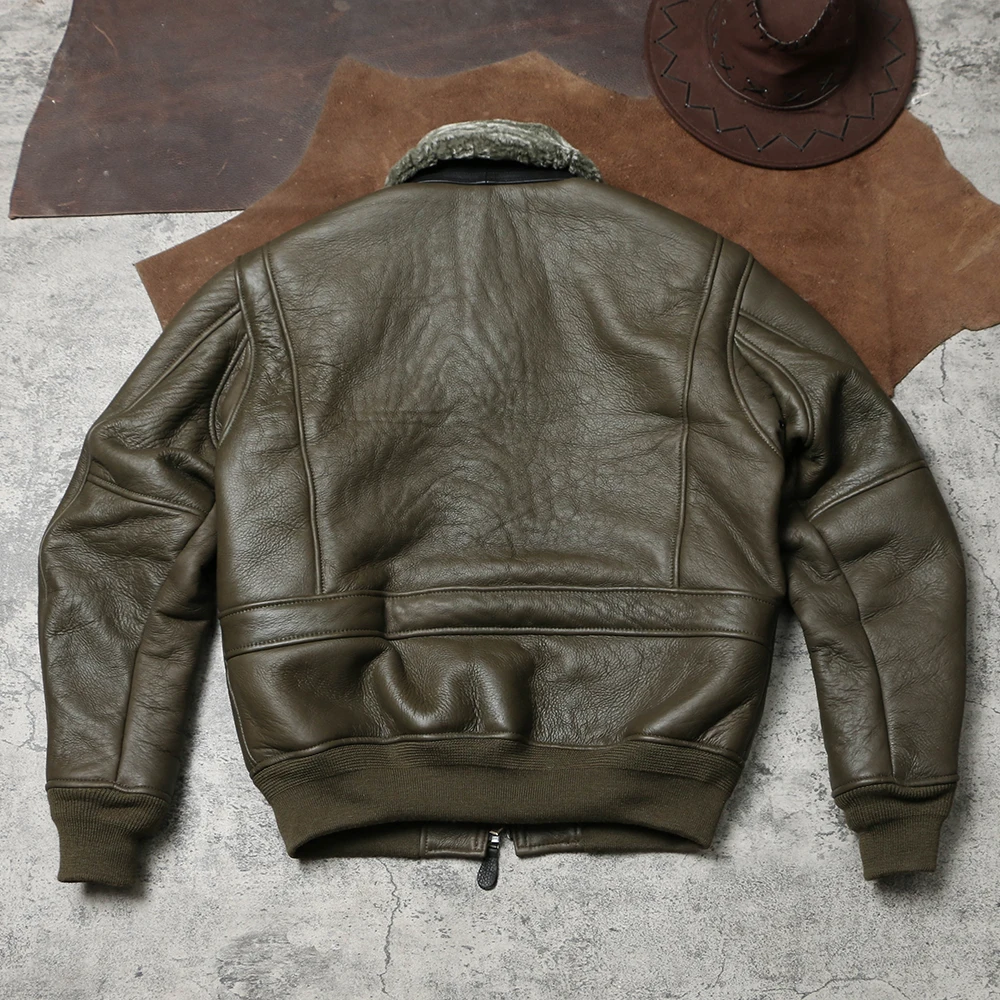
When considering winter options, understanding the differences between shearling or sheepskin winter choice can help you select materials that complement your preferred length.
Common Coat Length Mistakes and How to Avoid Them
Even with the best intentions, many men make these common mistakes when selecting coat length:
Ending at the widest part of your body: A coat that ends exactly at your widest point (whether shoulders, midsection, or hips) draws attention to that area. Instead, choose lengths that end at narrower parts of your frame.
Choosing extreme lengths for everyday wear: While floor-sweeping coats or very cropped styles make fashion statements, they’re often impractical for daily use and can limit your coat’s versatility.
Ignoring sleeve length in relation to coat length: Proportionally, longer coats should have sleeves that hit precisely at the wrist, while some shorter styles can show a bit of shirt cuff.
Following trends without considering personal body type: Just because floor-length coats are trending doesn’t mean they’ll flatter your specific proportions.
Selecting formal coat lengths for casual contexts: A formal full-length overcoat can look out of place with jeans and sneakers, just as a short pea coat might seem underdressed with a business suit.
Understanding what length coat makes you taller can help you avoid these common pitfalls and select proportions that enhance your natural shape.
Frequently Asked Questions About Coat Length
How can I tell if my current coat is the wrong length?
Look for signs like restricted movement, bunching when you sit, sleeves that ride up too far, or a silhouette that emphasizes parts of your body you’d rather not highlight. The right length should feel comfortable and look proportional to your overall height.
Can I wear a longer coat if I’m not very tall?
Yes, but with careful styling. Choose a longer coat with a clean, vertical line, avoid bulky fabrics, and ensure the shoulders fit perfectly. Consider a length that hits below the knee rather than at the ankles.
Do the same length rules apply to casual jackets and formal overcoats?
Generally no. Casual jackets are typically shorter (hip to mid-thigh length), while formal overcoats traditionally run longer (knee-length or below). The context and intended formality level influence appropriate length.
How much should sleeve length and coat length correlate?
They should be proportional. Longer coats should have sleeves that hit precisely at the wrist, while some shorter, casual styles can show a bit of shirt cuff. The sleeves should never be so long that they cover your hands.
How should I adjust coat length if I plan to layer underneath?
If you’ll regularly wear thick sweaters or suits under your coat, consider sizing up or choosing a style cut with layering in mind. The length should remain the same, but the overall fit may need adjustment.
How to Shop for Your Perfect Coat Length
Finding the perfect coat involves more than just understanding principles—it requires practical shopping skills:
In-store shopping tips:
* Wear similar clothes to what you’ll typically wear under the coat
* Check the coat length while both standing and sitting
* Ensure the coat doesn’t bunch or pull when buttoned
* Test your movement: can you comfortably reach forward and up?
* Check proportions from all angles using multiple mirrors
Online shopping strategies:
* Know your measurements, especially height and arm length
* Check the model’s height in product photos for comparison
* Review the garment measurements (not just S/M/L sizing)
* Look for length descriptions (e.g., “hits at mid-thigh”)
Key measurements to know:
* Your height
* Your arm length from shoulder to wrist
* Your typical suit or jacket size
Most importantly, test the coat’s movement. A perfectly proportioned coat on paper might not work if it restricts your natural motion. The coat should move with you, not against you.
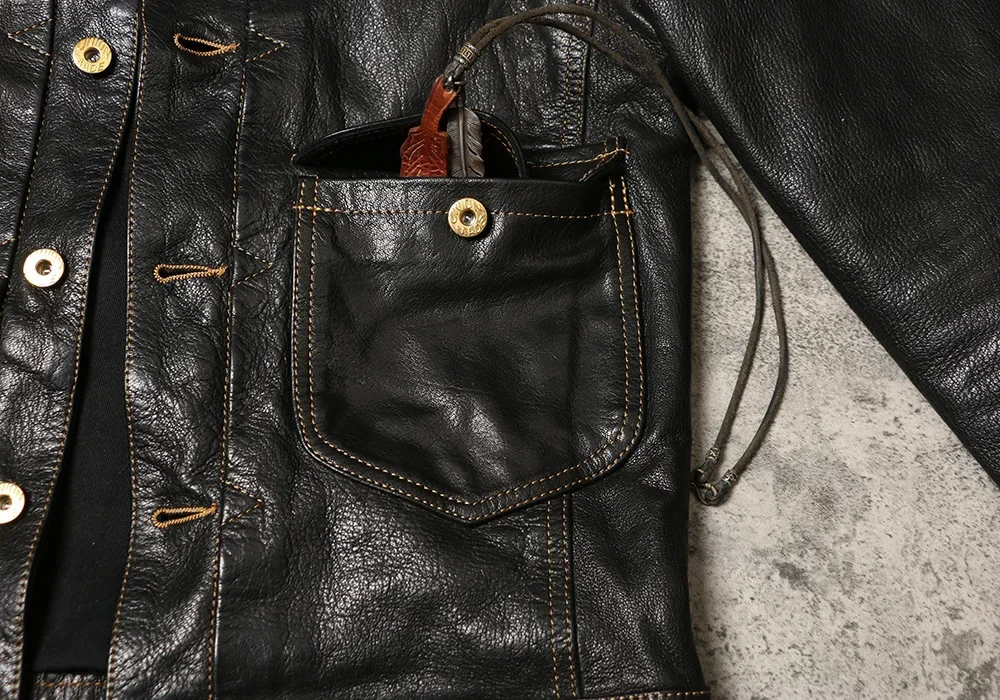
For more comprehensive advice on matching style with proportion, explore our men’s coat length style guide for additional tips and visual examples.
Conclusion: Wear Your Perfect Length with Confidence
Finding the right coat length for your body type transforms not just how you look but how you feel. The perfect coat creates balanced proportions, highlights your best features, and gives you confidence in any setting.
While the guidelines we’ve shared provide a strong foundation, remember that they’re just that—guidelines, not rigid rules. Your personal comfort, style preferences, and confidence should ultimately guide your choices.
Don’t be afraid to experiment within the parameters that work for your body. Try on different lengths, notice how they affect your silhouette, and pay attention to which options make you feel your best.
The right coat does more than just keep you warm—it becomes a signature piece that enhances your presence wherever you go. With these principles in mind, you’re now equipped to find outerwear that truly fits and flatters your unique physique.

